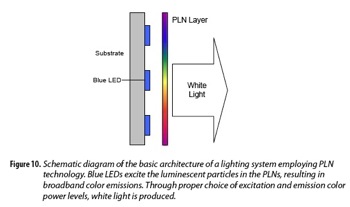Daniel Yergin has a new book out about the oil industry. It's a sequel to his acclaimed earlier book, The Prize: The Epic Quest for Oil, Money and Power. In the new book, The Quest: Energy, Security, and the Remaking of the Modern World, he discusses "energy" as the engine of global political and economic change, as well as central to the battle over climate change. The scope of the new book includes Beijing and China's growth, the oil reserves in the Caspian Sea, conflicts in the Middle East, political power struggles in Washington DC, technology development in Silicon Valley, and more.
Salon.COM just posted an interview with Daniel Yergin which shows his intelligence and knowledge, but also a somewhat flawed view. (See the link below) Basically he's too quick to discount peak oil, and too confident on new technology to save our bacon. I see a lot in the interview to agree with, and think he has a lot of important things to say.
Some context is the high oil prices in 2008 that had everybody all concerned. That is, until the financial crash in the fall of 2008 that overwhelmed our attention span. Since 2008 the price has gone up and down in a way that has many thinking "market manipulation by greedy tycoons". The common refrain against peak oil concerns is that obviously the price fluctuations aren't due to supply concerns, but due to market manipulation. I'm sure that market manipulation is a large part of the price fluctuations, but the core issue is that the easily tapped oil that's cheap to produce cannot sustain production levels to support the energy needs of our society. As that supply of cheaply produced oil tightens we're going to see many issues arise.
The Salon interview starts by asking him about the validity of Peak Oil
The peak oil argument is that we are already halfway through the world's endowment of recoverable oil. The argument that I am making is that the endowment is much larger, and technology keeps enlarging what we can recover.
He goes on to discuss some unacknowledged oil resources:
- an offshore formation in Brazil called "presalt" (oil found under a thick layer of salt lying just beneath the seabed).
- The Bakken formation (a rock formation yielding shale, or "tight" oil) which is now producing 450,000 barrels of oil a day, up from 10,000 barrels a day recently.
These are sources of fossil oil, to be sure. But are they examples of the sort of easily tapped cheaply produced oil reserves our society grew up on? No.
The presalt formations in Brazil have significant reserves (5-8 billion barrels in the Tupi field, with several other known fields bringing the totals much higher). The oil is light-sweet-crude that's easily tapped and processed. However, it's in deep water way off shore. The Tupi field is 160 miles off-shore from Rio De Janeiro. The water is 6,600 feet deep, and the oil is another 15,000 feet below the water. This is extremely deep drilling that's going to be highly costly to tap, and if there's an accident at the well might I remind you of the Deep Water Horizon disaster in the summer of 2010?
The Bakken Formation, as a shale oil reserve, will be requiring high energy inputs to extract oil. We're talking about rocks that are a bit oily, rather than freely flowing oil. The process to extract oil from these rocks requires heat and steam, which requires energy inputs to get the oil.
The point of mentioning these technological hurdles is that it shows Yergin is not taking into account the Energy Return on Investment. If it costs you a barrel of oil's worth of energy to get a barrel of oil, you're at a wash in terms of energy gain. What made the early years of the Age of Oil so successful was the energy gain at 100-to-1 ratios, where you'd spend 1 barrel of oil worth of energy, and get back 100 (or more) barrels of oil from the well. Over the years this ratio has shrunk considerably.
Yergin does suggest there have been recurring fears that we'll run out of oil.
There have been recurrent periods of great fear of running out of oil and it goes back to when oil was first developed as a commercial business in western Pennsylvania in the 19th century. It was always mysterious and people were predicting it would come to an end and we'd have to go back to using whale oil or coal or so forth. But each time there is this anxiety, what happens is new technology, new innovations, new areas open up, and the supply picture suddenly looks much better. So this current peak oil discussion is really the latest manifestation of what has been a recurrent feature since people started using and developing oil. But when you look at the numbers, we see that there is an additional supply coming in. My view is that rather than facing an imminent decline we'll see production of oil liquids continue to expand for a few more decades and then it'll come to a plateau. It won't necessarily fall off sharply.
I don't know enough to predict the shape of the fossil oil production/demand curves in the coming years. However it's telling that he uses the phrase "oil liquids" because that includes the possibilities of producing liquid oil products from sources other than fossil oil.
What the peak oil community fails to take into account is that fossil oil isn't the only source of oil liquids. There are plenty of plants and animal sources that could be tapped. Further tapping biomass sources (plants and animals) does not worsen the carbon footprint in the atmosphere, because it doesn't re-introduce carbon that had been sequestered zillions of years ago. However the concern with biomass sources is the competition against use of biomass for other purposes such as food, clothing, timber, paper, etc.
In any case as he points out, new fossil oil resources have to be developed, which takes time and money. There may not be enough time for these new fossil oil resources to be developed before the oil supply crunch hits us hard. And there may not be enough money, given the current debt crisis rocking the world financial markets.
The next thing they talk about is the global energy dominance struggle between China and the rest of the world. Yergin says the Western powers (Europe, U.S., Japan) is going to see a decrease in fossil oil demand because "we are going to be driving more efficient cars by 2025.. [that are] supposed to get up to 64 miles to the gallon."
Okay, yes, the Obama Administration did push for stronger CAFE standards which require much higher miles/gallon efficiencies by 2025. While the car companies do produce high efficiency cars for sale in Europe they've dragged their feet in doing so for America. Higher fuel efficiency will decrease the oil demand curve and he later says "energy conservation" is grossly underestimated because it is in effect an energy source.
However one thing going on about China is that consumption which formerly happened in the West is now happening in China due to the outsourcing of manufacturing etc to China.
Yergin refers to a Japanese term, "Mottainai", which he describes as "too precious to waste."
In the U.S. we had so much oil for so long that we don't understand fossil oil as "too precious to waste". He suggests, and I agree, that we need to rearrange our thinking about fossil oil.
I see a lot in the interview to agree with. For example the "energy security" issue that is a huge threat to the U.S. (and other countries). The "energy" (better term is to call it what it is; fossil oil) that drives our society is the foundation of our wealth. Our lifestyle is in absolute dependance to keeping fossil oil resources flowing into our gasoline tanks.
However this issue is largely unrecognized in the popular discourse. Instead there's a lot of misinformation out there suggesting it's not that big a deal. And of course the Republicans are using this as a wedge issue to make more false slander against the Obama administration.
Synopsis:
In this gripping account of the quest for the energy that our world needs, Daniel Yergin continues the riveting story begun in his Pulitzer Prize-winning book, The Prize. A master storyteller as well as a leading energy expert, Yergin shows us how energy is an engine of global political and economic change. It is a story that spans the energies on which our civilization has been built and the new energies that are competing to replace them. From the jammed streets of Beijing to the shores of the Caspian Sea, from the conflicts in the Mideast to Capitol Hill and Silicon Valley, Yergin takes us into the decisions that are shaping our future.The drama of oil-the struggle for access, the battle for control, the insecurity of supply, the consequences of use, its impact on the global economy, and the geopolitics that dominate it-continues to profoundly affect our world.. Yergin tells the inside stories of the oil market and the surge in oil prices, the race to control the resources of the former Soviet empire, and the massive mergers that transformed the landscape of world oil. He tackles the toughest questions: Will we run out of oil? Are China and the United States destined to come into conflict over oil? How will a turbulent Middle East affect the future of oil supply?
Yergin also reveals the surprising and sometimes tumultuous history of nuclear and coal, electricity, and the "shale gale" of natural gas, and how each fits into the larger marketplace. He brings climate change into unique perspective by offering an unprecedented history of how the field of climate study went from the concern of a handful of nineteenth- century scientists preoccupied with a new Ice Age into one of the most significant issues of our times.
He leads us through the rebirth of renewable energies and explores the distinctive stories of wind, solar, and biofuels. He offers a perspective on the return of the electric car, which some are betting will be necessary for a growing global economy.
The Quest presents an extraordinary range of characters and dramatic stories that illustrate the principles that will shape a robust and flexible energy security system for the decades to come. Energy is humbling in its scope, but our future requires that we deeply understand this global quest that is truly reshaping our world.
See:
http://www.salon.com/life/feature/2011/09/29/yergin_the_question_interview/index.html

